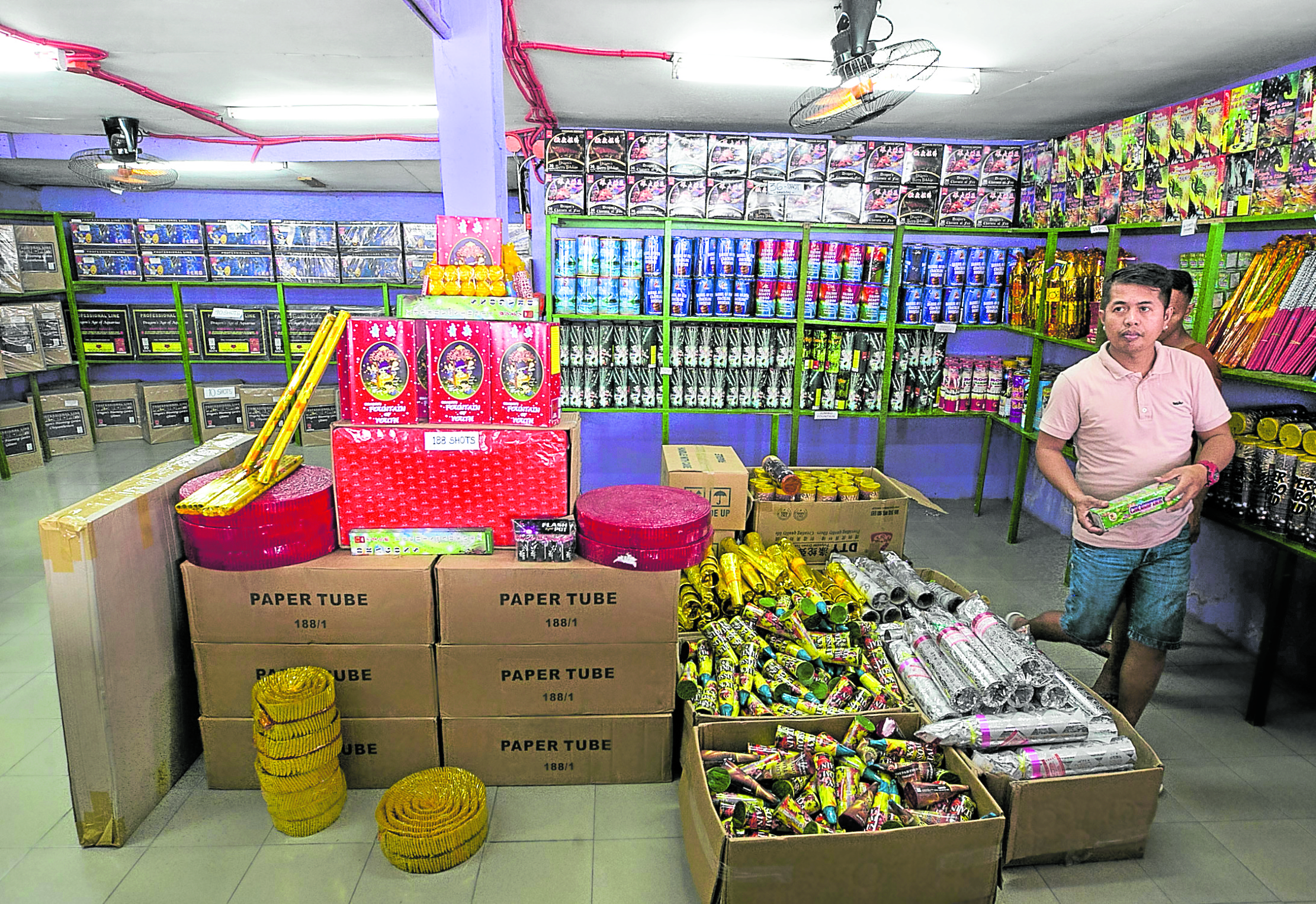
DECEMBER 30, 2022 | Selling of firecrackers in Bocaue, Bulacan for New Year’s Eve celebrations. INQUIRER PHOTO/LYN RILLON
Days before the New Year revelry, people were already buying pyrotechnic devices despite the surge in prices due to low supply but higher manufacturing costs.
“If you were able to buy one before for P100, you’d be lucky if you can get it now for P250,” Joven Ong, president of the Philippine Fireworks Association, told the Inquirer in a telephone interview on Friday.Fireworks and firecrackers, he said, have become more expensive because local manufacturers’ outputs have dropped due to problems in sourcing imported materials for their products.“The shortage is immense this year,” Ong said, citing a conservative estimate that output fell by at least 50 percent.“Before the pandemic, our orders could arrive in two months; now, it takes five or six months,” he added.
Ong said the prices of imported materials, mostly from China, have gone up, with some seeing a two-fold increase this year.
He said the decline in the value of the Philippine peso and high fuel prices that had driven up logistics costs in delivery and shipping had further pushed the prices.
Bestsellers
This year, Ong said people mostly bought fountains and sparklers, as many have shifted to fireworks than firecrackers.
“We’ve noticed that many also want aerial devices—fireworks that shoot up into the sky and explode in a number of colors,” he added.
In the “fireworks capital” of Bocaue in Bulacan province and in Dagupan City in Pangasinan province, buyers mostly from Metro Manila and the rest of Luzon also prefer aerial pyrotechnics and sparklers apart from the traditional “kwitis,” or skyrockets.
In Bocaue stores, the price of regular kwitis jumped from P500 to P1,000 per bundle of 100; the large ones were sold for P2,500, more than double the old price of P1,200 per bundle.
China-made “Judas belt” that used to sell for P1,200 now costs P2,500; a box of aerial pyrotechnics at P2,500 is now sold for P3,500.
In Dagupan City, multicolored sparklers were sold for P10 per box of 10 pieces, while a box of aerial pyrotechnics costs P50,000.
Buyers doing their last-minute shopping have also caused the brisk sales.Retailer Hijara Asliah, 45, said she had to sleep inside her van and wait the next day for stocks to arrive.Vin Sicat, 38, observed that “balikbayan” (returning overseas Filipinos) preferred to buy “high-end” fireworks, citing an elderly man who paid P6,500 for a box of 36-shot pyrotechnic device.
Raffy Marcellano, 53, said prices had doubled or tripled, noting that the price of a 16-shot pyrotechnic device increased from P900 to P2,500 this year.
Local gov’t ban
Local government officials in Quezon City, Caloocan City, Malabon City and Valenzuela City issued orders designating “common firecracker areas” and reminded the public of the prohibitions and regulations in the use and sale of fireworks and firecrackers.
In Quezon City, the permitted areas to hold pyrotechnic performances on Dec. 31 are Quezon Memorial Circle, Eastwood City Open Park, Robinsons Novaliches, SM City Fairview, SM North Edsa and SM City Novaliches.
The Caloocan, Valenzuela and Malabon local governments designated barangay heads to specify fireworks display zones while Navotas City had banned the use of pyrotechnics.Local officials encouraged residents to use alternative noisemakers, such as party and car horns, drums, sound systems and kitchenware to welcome the New Year. —WITH REPORTS FROM CARMELA REYES-ESTROPE, YOLANDA SOTELO AND ABBY BOISER INQ
RELATED STORIES
DTI bares list of certified firework brands
Marcos tells LGUs to set up common areas for fireworks display